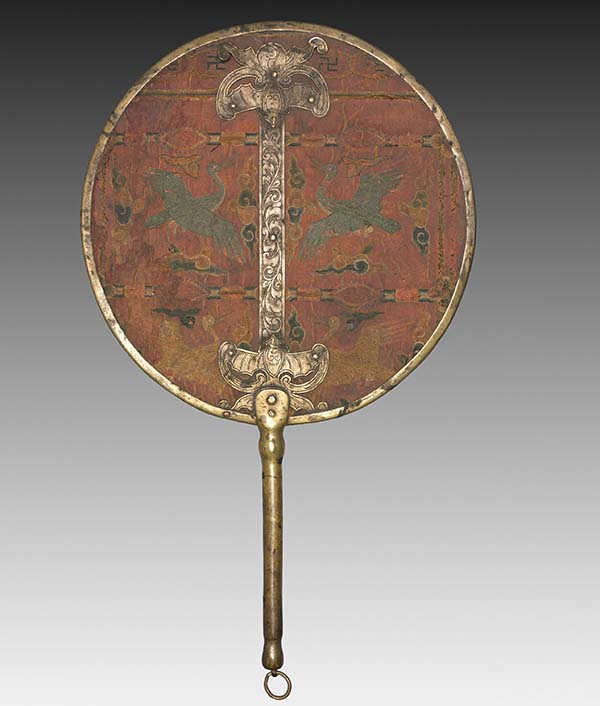Korean Embroidered Wedding Fan
This Korean fan was featured in the exhibition Gold Needles: Embroidery Arts from Korea at the Cleveland Museum of Art in 2020. Co-organised with the Seoul Museum of Craft Art, the exhibition celebrated anonymous women artists and their inventive creations that triumphed over the conventions of the patriarchal Joseon society.
Most of the loaned works on display, which include embroidered gift wrappings, folding screens, rank badges, and sewing tools. Embroidery arts flourished in the Korean Peninsula long before the Joseon period. Ancient texts such as the History of the Three Kingdoms, informs us that embroidery was a luxury deployed to display wealth, taste, high social status for royalty, and around the 800s, embroidered silk robes were also worn and enjoyed by commoners. The art of embroidery is still very much alive in Korea today.
In the Joseon period, women between the ages of 14 and 20 were matched with a husband through an arranged marriage. Even during the Korean marriage ceremony, a bride was supposed to veil her face with this type of embroidered fan as a gesture of chastity. This fan’s body is made of paper and silk trimmed with a gilded metal rim. On the front, four cranes – one pair in blue, the other in yellow – are stitched along with auspicious clouds. The back is adorned with dragons flying amid clouds. The metal band vertically running down the centre is incised with a bat, a symbol of wealth.
Wedding fan, mid-1800s, Korea, Joseon dynasty (1392-1910), copper alloy, satin weave silk, silk and metal thread embroidery, paper, diam. 25.6 cm. Director’s Contingent Fund, Cleveland Museum of Art

